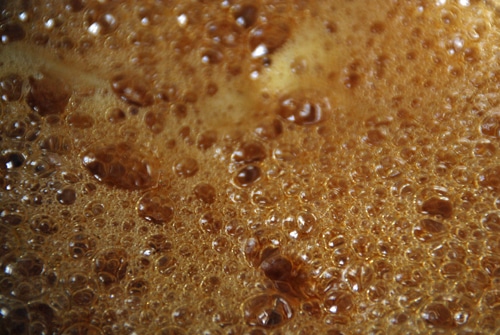Now for the last, promised article on the dandelion. As announced in the article “Dandelion! – A song of praise for the underestimated little flower“, a recipe for making vegan dandelion blossom honey, particularly suitable for urban gardeners.
But making honey yourself? Without any bees, just with flowers? Sure, no problem.
All you need is:
- 250 dandelion flowers (harvested in the morning on a sunny day)
- 1000 g sugar (preferably raw cane sugar)
- one litre of water
- one organic lemon
The first steps are identical to those for making the delicious dandelion flower jelly. You can read more details here: “Dandelion flower jelly – a rare flavour experience“.
So here is just a brief summary of the first steps: The flowers are cleaned, then all the green parts are removed. The yellow parts of the dandelion flowers are then briefly boiled with the water and the sliced lemon. The pot is then removed from the heat, covered and placed in a cool room overnight. The next day, everything is passed through a fine sieve and the liquid is collected for further processing. The boiled flower remains are now ready for the compost.
So far, all the steps have been identical to the preparation of dandelion flower jelly, which is why we like to combine the two and make dandelion flower jelly from half of the liquid and dandelion flower honey from the other half. But that’s just a little tip on the side.
Now back to the recipe: To make the honey, the sugar is boiled down together with the liquid. The duration depends heavily on the temperature. In our experience, it can take 60 to 90 minutes to boil the full amount. For half the quantity, 25 minutes is usually sufficient. However, simmering honey is very runny and it is better to have five jelly samples too many than one too few. If the honey becomes too solid, it can no longer be spread and portioned afterwards. It is therefore better to boil the honey down a little too liquid than too solid. However, if the honey has boiled down too much, it can be carefully diluted with a little water during the cooking process.

The finished honey is then poured hot into prepared jars with screw caps.
A little tip for refining the flavour: if we are only making the honey and not the jelly, add a few sprigs of thyme to the flowers and lemon slices on the first day.
The honey is excellent for spreading on bread. If, on the other hand, the honey has accidentally become too solid, it is still excellent for sweetening tea.

